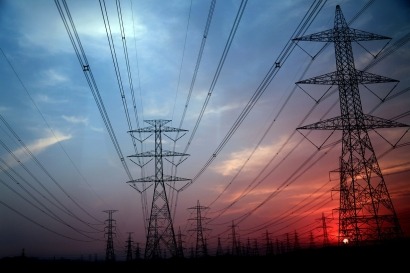
This ambitious endeavor necessitates a multifaceted approach, focusing on the acceleration of renewable energy sources, curtailing the reliance on unabated fossil fuels, fostering rapid electric vehicle (EV) adoption, and ensuring universal access to affordable and reliable energy. At the heart of these initiatives lies the critical need for an evolution of the world's power grids, which must not only keep pace with escalating demands but also seamlessly integrate an array of renewable energy sources.
The escalating demand for energy
Forecasts indicate a potential 50% surge in global energy demand by 2050, a figure that may well be an underestimation given current trends. The drive towards electrification, particularly through the adoption of EVs, alongside the exponential growth of cloud computing and digital financial services, is propelling this demand to unprecedented levels.
The United States, for example, has set ambitious targets to electrify its transportation sector, aiming to replace a significant portion of its vehicle fleet with EVs by 2032. Concurrently, the digital economy's expansion is significantly increasing the energy footprint of data centers worldwide, further straining the existing energy infrastructure.
According to the IEA, after globally consuming an estimated 460 terawatt-hours (TWh) in 2022, data centers' total electricity consumption could reach more than 1 000 TWh in 2026.
Tackling regulatory and infrastructure bottlenecks
The expansion and modernization of electrical transmission and distribution networks are imperative to meet the burgeoning demand and integrate renewable energy sources effectively. However, this expansion is often hampered by lengthy regulatory processes, technical grid challenges, availability of skilled resources, and necessary funding to build out both physical and digital solutions.
Digital technologies offer a beacon of hope in navigating the challenges of the energy transition. By leveraging real-time control and automation, forecasting and scheduling, as well as advanced analytics, digital solutions can optimize the planning and management of the grid. These technologies enable more accurate demand forecasting, supply and load balancing, and renewable integration, thereby mitigating some of the operational challenges with the accelerated energy transition on the grid.
Strengthening grid resilience through digitalization
The integration of distributed energy resources (DERs) such as solar and wind power introduces new complexities into grid management. The dynamic nature of renewable energy sources, coupled with fluctuating demand patterns and the interconnected nature of global electric grids, necessitates a more sophisticated approach to grid management.
Digital solutions, including Energy Management Systems (EMS) for Transmission Operators, Advanced Distribution Management Systems (ADMS) for Distribution Operators and Distributed Energy Resources Management Systems (DERMS), are pivotal in addressing these complexities. By providing enhanced visibility and control over the grid, these digital systems enable utilities to maintain grid stability and reliability in the face of increasing demand and the variable nature of renewable energy sources.
Ensuring industrial energy reliability
The transition towards electrification and the integration of renewable energy are not confined to the public sector but extend into the industrial domain. Industries such as refining, chemicals, and mining are under increasing pressure to electrify their operations and incorporate a higher mix of renewable energy.
However, achieving a stable and reliable energy supply remains a significant challenge, particularly in regions with less developed infrastructure. Digital DERMS and microgrid solutions offer a pathway to resilience, ensuring that industrial operations can maintain continuous operation while optimizing their energy mix for sustainability and efficiency.
Electrification of industrial processes
Beyond grid management and energy distribution, digital innovation plays a crucial role in the potential electrification of industrial processes. Digital modelling and simulation tools enable the exploration and optimization of electrified processes, from heat exchange systems to chemical reactors. These tools facilitate the design of more efficient and sustainable industrial operations, contributing to the reduction of carbon emissions and the advancement of green manufacturing practices.
Moving forward
The path to a sustainable energy future is complex and fraught with challenges. However, the integration of digital technologies with renewable energy initiatives offers a viable pathway to overcoming these obstacles.
By enhancing digital grid management capabilities, utilities can accelerate infrastructure development and ensure energy reliability across sectors. As we move forward, the synergy between digital technology and renewable energy will be instrumental in achieving the ambitious goals set forth by global climate initiatives, paving the way for a cleaner, greener future.
About the Author: Sally Jacquemin is Vice President & General Manager ,Power & Utilities, AspenTech

